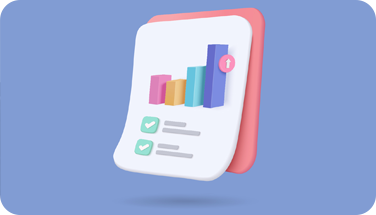The key considerations for effective financial planning
The process of financial planning in an organization can be overwhelming. From identifying and quantifying all your company's financials to deciding what data is important enough to warrant it being considered in your planning, the task can seem daunting. But the good news is that there are some simple steps you can take before you even start any financial, operational, or strategic planning that will help make the entire process go much more smoothly:

Make sure you have the data you need
The first step to effective financial planning, budgeting, and forecasting is to make sure you understand what data you need. Data is raw facts and figures, but it's only useful in context. For example, if a company has sales of $100 million and profits of $20 million, this doesn't tell us much about its performance compared with other companies in its industry – or even how well it's doing compared with itself over time. This can be remedied by analyzing data using various tools that show trends over time.
Make sure your data is accurate, up-to-date, and reliable
There are several steps you need to take. Your financial projections will be useless if they're based on inaccurate assumptions or poor guesses. Consistency helps ensure that all of the data in your financial planning makes sense together, and it also makes it easier for people who access it later on when they have questions about how certain things worked out over time. When your historical or actual data comes from an integrated system such as an Enterprise Resource Planning (ERP) solution, you know you can rely on the accuracy of a single source of data truth.
Click to read FP&A product brochure gated
Decide what data is important enough to make it into your plan
The next step is determining what data is important enough to go into your planning activities. It's easy to get caught up in the "if I only had this or that data" mentality when undertaking any budgeting, forecasting, or planning. But there are three things that you need before even considering how much data you can include:
The ability and willingness of management (and other key stakeholders) who will be contributing their time towards planning cycles.
An understanding of how each stakeholder's role contributes towards reaching milestones.
An understanding of how each stakeholder's role relates back to achieving strategic objectives.
If you find some things will require more time or effort than others, decide which ones are worth taking the extra steps for inclusion in your planning cycles – and then take those steps!
Identify your key financial assumptions and test them against historical data or other relevant sources
Your planning should include a list of the most important factors that will affect the success of your company. These include revenue, expenses, and capital requirements. You can use historical data from previous years as well as projections from industry experts or economists as a starting point for testing these assumptions in order to ensure they're realistic within the context of your market conditions now (or at some point in time).
Devise alternative scenarios
Scenario planning helps to assess factors that may change your business environment or financial results and develop contingency plans for how you will react to such changes if they occur. Think about how the business will react to each scenario and identify any actions that can be taken to mitigate the impact of the scenario. Make sure you have a plan in place to deal with any changes that might occur in your business environment or financial performance.
Planning should be easy to understand and include all the key aspects of a business
Financial data can often be hard to understand for non-financial staff or stakeholders, but it is essential that you include financial data that is robust and accurate to save wasted effort debating on what is the correct version of the truth. To support this, it's important that all organizational functions provide accurate, up-to-date, and reliable results recorded into source systems such as an ERP. If there are any gaps in the data necessary for making sound decisions about options or future growth opportunities, these gaps need to be filled before moving forward.
And finally…
Financial planning, such as forecasting and budgeting for the future, is not an easy task. It takes time, effort, and dedication to align with strategic and operational goals that will help your business succeed in the long run.
How Unit4 can help your organization
At Unit4, we help organizations better manage their operations with industry-leading software for Financial Planning and Analysis (FP&A), Enterprise Resource Planning (ERP), and Human Capital Management (HCM). You can check out Unit4's People Experience suite here.
FAQs
- What is the first step of writing a business plan?
The first step in writing a business plan is to conduct market research and gather all of the data you will need to be able to write a detailed executive summary, setting out high-level growth plans and all financial information.
- How can software help with financial planning?
With the help of financial planning software, businesses can assess and review their financial processes. This empowers them to make proactive decisions instead of reactive ones. The software enables them to predict with confidence the most profitable and cost-effective strategies to follow.


